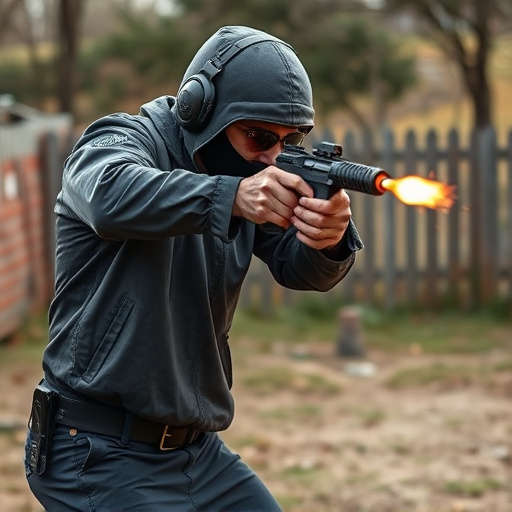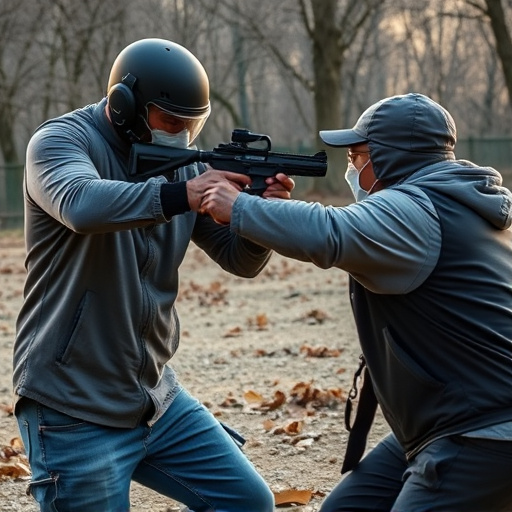Despite their intended purpose, stun guns pose significant risks, notably neurological side effects like seizures and temporary paralysis, due to misfires caused by mechanical issues or improper use. Advanced technology in modern stun guns has reduced these risks through precise, controlled jolts that target specific nerve pathways without affecting higher brain functions. Safe usage requires user training, awareness of legal restrictions, and regular maintenance to prevent misfires and minimize the chances of stun gun neurological side effects.
Stun guns, designed as non-lethal self-defense tools, have evolved with advanced technology. However, misfires pose significant risks, including potential neurological side effects. This article delves into understanding the causes of stun gun misfires and explores innovative solutions that prevent these complications. We examine advanced technologies aimed at mitigating neurological impacts, alongside essential safety measures and user training protocols. By embracing best practices, users can maximize the effectiveness and minimize the hazards associated with stun guns.
- Understanding Stun Gun Misfires: Causes and Risks
- Advanced Technology: Preventing Neurological Side Effects
- Safety Measures: User Training and Best Practices
Understanding Stun Gun Misfires: Causes and Risks

Stun guns, while designed to incapacitate an attacker with a powerful electric shock, are not without risks. Understanding misfires is crucial in mitigating potential dangers. A stun gun misfire occurs when the device fails to deploy its intended shock, often due to various factors. These include mechanical malfunctions, battery issues, or improper usage. In some cases, a misfire might result in no sensation at all, leading users to believe it’s ineffective, but more concerning side effects could be neurological impact, including stun gun neurological side effects such as seizures or temporary paralysis.
The risk of these complications is not insignificant, especially when considering that stun guns are often used in self-defense scenarios where every second counts. Thus, buyers should prioritize models with robust safety features and proper training to minimize the chances of misfire and its associated risks, particularly stun gun neurological side effects.
Advanced Technology: Preventing Neurological Side Effects

Advanced technology in stun guns has significantly minimized neurological side effects, a major concern among users and professionals alike. Modern stun guns employ sophisticated electrical engineering to deliver precise, controlled jolts that disrupt muscle control without causing permanent damage to the nervous system. This is achieved through advanced pulse generation and current distribution mechanisms, ensuring energy is directed specifically to the target area while minimizing impact on surrounding tissues.
Unlike traditional stun guns that use high-voltage, low-current pulses which can lead to neurological complications, contemporary models utilize optimized waveforms and smart circuitry. These features allow for a more targeted approach, activating specific nerve pathways responsible for muscle contraction without affecting higher brain functions. The result is a powerful incapacitant that reduces the risk of stun gun neurological side effects, making it a safer option for self-defense and law enforcement applications.
Safety Measures: User Training and Best Practices

When it comes to stun gun safety, user training is paramount. It’s crucial to understand that while stun guns are designed to incapacitate an assailant temporarily, they do not always function as expected. Misfires can occur due to various factors such as environmental conditions, incorrect use, or device malfunction. User training should cover proper handling techniques, including how to hold and activate the device safely.
Additionally, best practices emphasize avoiding aiming at sensitive areas like the neck or head, as this could lead to neurological side effects. Users should also be aware of their surroundings and legal restrictions in their jurisdiction. Regular maintenance and inspections are essential to ensure the stun gun’s reliability, including checking for any signs of damage or malfunction.
Stun guns, while powerful tools for self-defense, can pose significant risks if not used properly. By understanding the causes of misfires and implementing advanced technology to prevent neurological side effects, users can enhance their safety. Additionally, comprehensive user training and adherence to best practices are essential to minimize potential hazards. Equipped with this knowledge, individuals can make informed decisions and confidently utilize stun guns as effective personal defense mechanisms.
